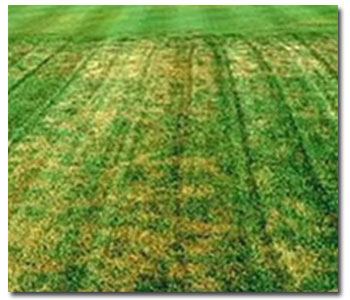Dealing with Brown Patch

If you have a lawn, your’re probably prone to “pampering” your lawn. Aesthetically, a nice lawn, well, just looks better. We are obsessed with our turf’s height, thickness and green coloring.
Unfortunately, such fussiness can lead to problems, especially during the summer months. You may think excessive watering and fertilization will give you a greener lawn when in fact, it can get you a nasty case of brown patch.
Caused by the fungus Rhizoctonia solani, brown patch commonly attacks St. Augustine, Kentucky Bluegrass, Centipede Grass and ryegrasses during the warm, humid months of summer. Brown patch looks just like what the name suggests: large brown patches appear in the lawn and gradually spread outward in a dark, wilted circle or horseshoe pattern. Sometimes the middle of the circle will start to recover a little, resulting in a doughnut-shaped brown and green area.
So what should you do? Here are a few tips:
- If you water your lawn in the evening, stop. Early morning irrigation is best.
- Cease the use of all high-nitrogen fertilizers.
- Set your mower to cut a little higher.
- Have a lawn service company perform a core aeration.
- Apply a natural fungicide, such as a corn gluten meal-based product, and finely sifted compost, after aeration.
Brown patch tends to shut down when temperatures rise above 90, so gardeners in hotter areas of the country may have to wait until early fall before applying fungicide, as it won’t have any effect on a dormant fungus.
And finally, the good news is that brown patch fungus attacks the base of the blade but does not kill the roots. So if you can get a handle on it, your grass will most likely recover…it’s just a matter of adjusting your grass pampering methods a little.
by Tamara Galbraith, added 6/01/13











